
| Navigation |
| Geo-Dome Home |
| Forum Home |
| View All Threads |
| New thread |
| Member login |

| Title: | Alternate method for strut lengths | |
| Posted on: | 1/27/2012 2:44:48 PM | |
| Category | Dome theory | |
| Author | bazil | |
| Status | Open | |
| Views | 10630 | |
| Replies | (13) | |
| Hi, had been playing with some simple domes and researching a lot. I was a bit surprised by the number of different strut lengths in higher frequency and in particular the variance between shortest and longest struts. So i put my thinking cap on and thought of dividing an icosahedron edge by angle, not by even lengths along the chord. I am not the first to describe this method. Fuller and others described and used the method, especially in high frequency domes (16V). Whereas the traditional method starts with equal lengths on the chord between two adjacent vertices of an icosa face, which when projected to the sphere surface creates the differing strut lengths, this method divides the arc on the surface of the sphere between two adjacent vertices into smaller arcs of equal angles. So the struts between each new vertex above the original icosa edges are the same length. Struts within the original triangle are necessarily different but symmetries allow for reductions depending on V. With 3V there are still 3 different lengths but the qty of two of them change. 4V has 5 different struts down from 6 with the traditional method. 5V has 7, two less than the 9 of the traditional method - note this may be reduceable to only 5 - i need to see how it looks. 6V has 8, one less than the 9 of the traditional method. Also, the difference between shortest and longest struts is less. This becomes significant as V increases. Whereas the percentage difference seems to grow as V increases in the traditional case, it seems to stay about the same with angular division. The resultant "pattern" of the struts is perhaps not as nice - especially in 3V but evens out with higher frequency. What changes is the lines of struts adjacent to a hemispherical line become a little more wavy. Just like the line of division in an odd frequency only a little more pronounced. Pictures and maybe a diagram tomorrow... Bryan | |
 |
|
| [ Comments 13 ] |
| posted by bazil | 27/01/2012 14:47:02 |
| Yuk, sorry about the formatting... I do do paragraphs and sentences... | |
 |
|
| posted by bazil | 28/01/2012 01:19:48 |
Below is a V3 - traditional on left, angular division on right. Looks a bit wonky - i would probably stick with traditional method

|
|
 |
|
| posted by bazil | 28/01/2012 01:25:07 |
Below is a V4 - traditional on left, angular division on right. Still a bit wonky but the hemispherical lines are preserved

|
|
 |
|
| posted by bazil | 28/01/2012 01:31:17 |
Below is a V5 - traditional on left, angular division on right. I am going to revisit this one as i think i can reduce number of diff strut lengths
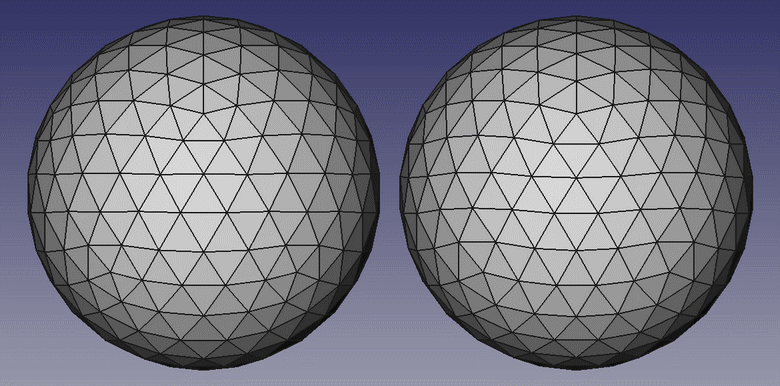
|
|
 |
|
| posted by bazil | 28/01/2012 01:35:34 |
A V6 my pride and joy - a lot of work went into this one...
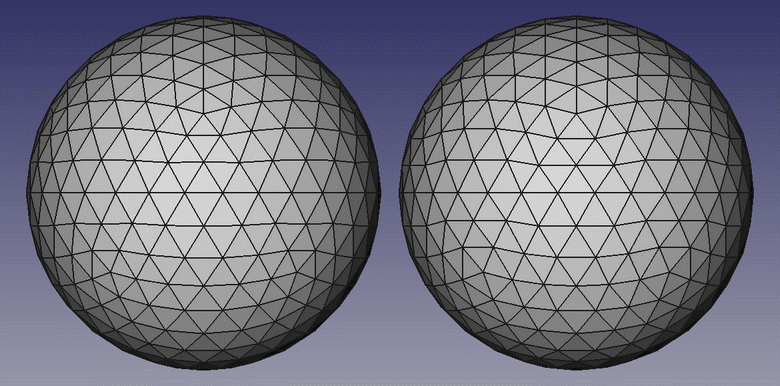
|
|
 |
|
| posted by bazil | 28/01/2012 03:23:42 |
| Images created with FreeCAD available at sourceforge.net | |
 |
|
| posted by bazil | 28/01/2012 10:25:02 |
Below are the strut positions for 3, 4, 5 & 6V. The 5V will change - the lime and dark green will become the same length, as will the pink and purple.
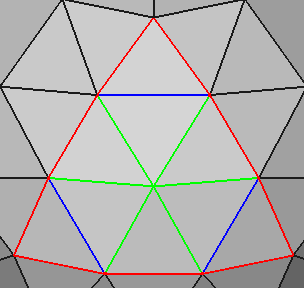 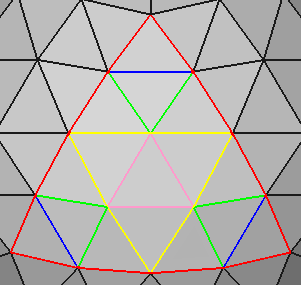 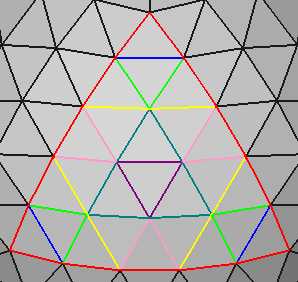 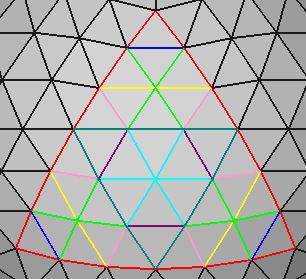
|
|
 |
|
| posted by bazil | 01/02/2012 08:25:59 |
I managed to reduce the number of diff struts to 5 for the V5 as mentioned above.
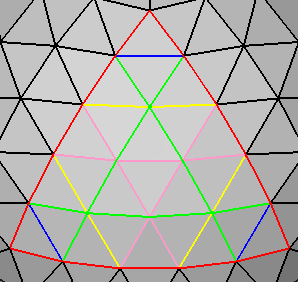
|
|
 |
|
| posted by bazil | 02/02/2012 11:57:34 |
| I have just been reading a lot over at the Google Geodesic Help Group about the Mexican Method and other methods. Those guys have done awesome research into many different methods and pretty much covered it all but i will make a post there describing how i came to what i found. I will note here however that i didn't use the Mexican Method - never went that far in my research - and wouldn't have anyway because I always kept the hemispherical planes intact for the even frequency 4 and 6V. | |
 |
|
| posted by Admin | 03/02/2012 22:03:42 |
|
Nice work Bazil, I'm also very interested in simplifying higher frequency structures. I use a panelized system for building domes so I have a slightly different take on, for example the alternate 3v has 3 strut lengths same as standard but if you look from a panelized perspective the alternate has 3 different panels and the standard only 2 so the standard works better for me. I've not heard of the Mexican method before so I'll do some research and get back to you on this. Anyway keep up the great work! |
|
 |
|
| posted by bazil | 04/02/2012 06:26:48 |
| Hi thanks for the encouragement. I have only really scratched the surface compared to what others have done... It seems to be the way that gain something from one perspective and lose from another... | |
 |
|
| posted by Hector Hdez | 22/03/2013 00:18:45 |
| Mexican method is an improvement of Clinton's method. I can says that from v=6 and biggers to have igual lenght structs by levels is not possible, at least you give permition that not all r=1. With this idea you can have aproximation very good for practical uses. | |
 |
|
| posted by popitch | 29/07/2013 13:18:11 |
| from V3 to V10 Mexican (and more...) method possible, see sample V8: //acidome.ru/lab/calc/next.html#1/2_Mexican_Piped_D102_8V_R3.5_beams_60x40 | |
 |
|
Login to add resources
Copyright © 2013 Geo-Dome.co.uk. All Rights Reserved.